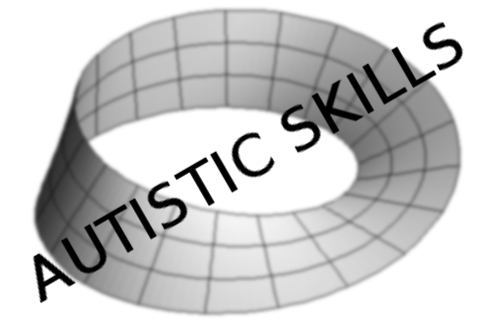

Learning about the own specific autistic thinking and perceiving must become part of the education of each autistic person.
Mars 2020 Concept and website of SIAM-workshops are ready and online: Website SIAM-Workshops (german)
Experiences with autistic humans show very clearly their untypical profiles of strengths and weaknesses. The way autistic humans think perceive and feel is completely different to the majorities way. These differences are very subtle and hard to understand because, they exist within the structure of thinking and perception processing. Even for autistic people themselves they are hard to understand. Anyway these differences are very basic and should not be underestimated.
Autistic people usually grow up within a non-autistic environment, at their parents, kindergarten, schools, friends and work places. All these environment expect a variety of perceiving and thinking-styles which doesn't include autistic humans. Non-autistic humans learn automatically from their peers how to understand and develop their thinking and perceiving and how to live with it in a good way - autistic humans don't have this opportunity to learn about their specific way of thinking neither how to develop it. They lack peers to mirror themselves and to grow up with. As a consequence autistic people have to find their own ways to develop their skills and potentials. Quite often this takes years - and far more time than for non-autistic people.
Their non-autistic environment expects autistic people to show perceiving- and thinking-style which are not appropriate for them. It ignores their specific type of thinking and perceiving. This is why a lot of autistic humans see themselves as having deficits and being isolated. Without appropriate peers they are late-developers and have a tough start into their adult life; a disadvantage only a small amount of them can overcome. To have a knowledge about their specific thinking- and perceiving-types is crucial for autistic humans in order to get a good living.
It's time for a new start: to learn about autistic thinking and perceving and to let autistic people benefit from this knowledge. Learning about the own specific autistic thinking and perceiving must become part of the education of each autistic person, within school and later on. This includes knowledge about thir own specific autistic skills and potentials.